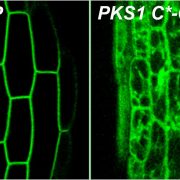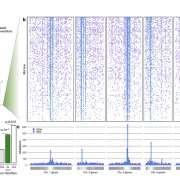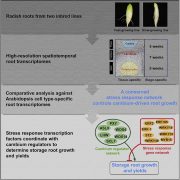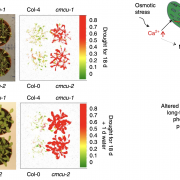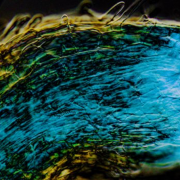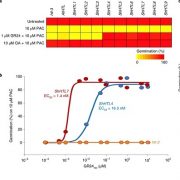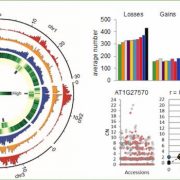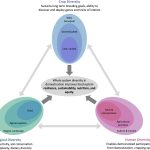Plastid Nucleoside Kinase 1 (PNK1) phosphorylates inosine to inosine monophosphate, involving in the feedback control of purine de novo synthesis in Arabidopsis
Chen et al. identify a nucleoside kinase that is highly conserved in plants and green algae.
By Xiaoguang Chen and Claus-Peter Witte. Department of Molecular Nutrition and Biochemistry of Plants, Leibniz Universität Hannover, Herrenhäuser Str. 2, 30419 Hannover, Germany.
Background: Nucleotides are the building blocks for DNA and RNA and are energy carriers (ATP) as well as precursors for many other key cellular molecules. Nucleotide metabolism in plants is conceptually divided into: (i) biosynthesis producing nucleotides from scratch from simple molecules, (ii) degradation leading to the complete decomposition of nucleotides, and (iii) salvage reactions that recycle nucleotide building blocks into nucleotides. Nucleoside kinases act in salvage by adding a phosphate group to nucleosides, which are precursors of nucleotides that lack a phosphate group.
Question: Nucleoside kinases for several nucleosides have been identified in many organisms, but kinases for certain important nucleosides, in particular inosine and guanosine, remain to be identified, except for a few examples from bacteria. It was long suspected that plants have such kinase(s) and we wanted to find the respective gene(s) and understand the function of the corresponding protein(s).
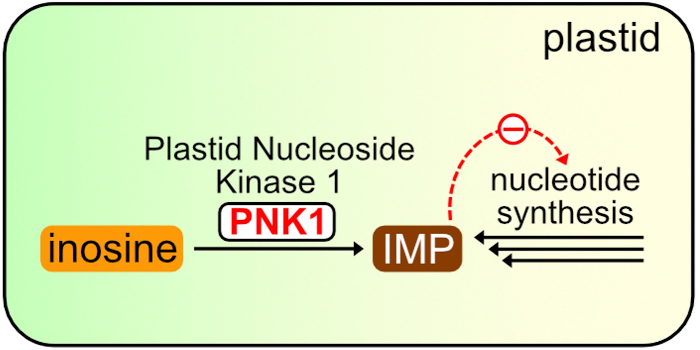
Findings: In this study, we identified PLASTID NUCLEOSIDE KINASE 1 (PNK1), an enzyme highly conserved in plants and green algae. We demonstrate that PNK1 from Arabidopsis thaliana is located in plastids and can phosphorylate inosine and uridine (but not guanosine) to produce the respective nucleotides inosine monophosphate (IMP) and uridine monophosphate (UMP). Mutation of PNK1 leads to less inosine salvage reducing the plant’s IMP content and increasing nucleotide degradation. Under certain conditions, the UMP content is also altered. We suggest that PNK1 acts in nucleoside salvage and contributes to the control of flux through nucleotide biosynthesis.
Next steps: It will be interesting to investigate how PNK1 is integrated into a regulatory network that ensures an adequate rate of nucleotide biosynthesis for the cellular needs. Which other components are part of this network and how does it operate?
Xiaoguang Chen, Sang-Hoon Kim, Sangkee Rhee, Claus-Peter Witte. (2023). A plastid nucleoside kinase is involved in inosine salvage and control of purine nucleotide biosynthesis https://doi.org/10.1093/plcell/koac320


